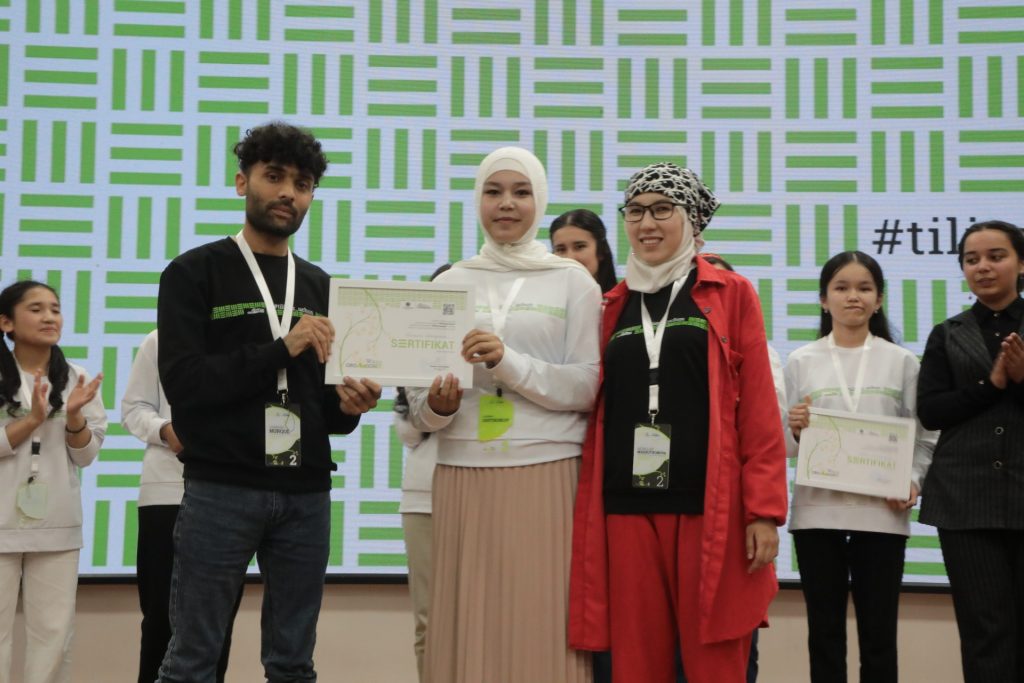
Building foundation: Effective strategies for teaching English in kindergarten
Axmadjonova Feruzaxon
O`zbekiston Davlat Jahon tillari Universiteti talabasi
Annotation: The article emphasizes the growing significance of English language proficiency in an interconnected world and highlights the advantages of introducing English education in kindergarten. It underscores the natural language learning abilities of young children and the cognitive, social, and long-term linguistic benefits associated with early exposure to English.
Keywords: language proficiency, cognitive skills, social skills, language acquisition, visual aids, interactive activities, bilingualism, storytelling
Аннотация: Статья подчеркивает растущую важность владения английским языком в мире, становящемся все более взаимосвязанным, и выделяет преимущества введения обучения английскому языку в детском саду. Она подчеркивает естественные способности к изучению языка у маленьких детей и приводит когнитивные, социальные и долгосрочные языковые преимущества, связанные с ранним знакомством с английским.
Ключевые слова: владение языком, когнитивные навыки, социальные навыки, усвоение языка, визуальные пособия, интерактивные занятия, двуязычие, рассказы
As the world becomes increasingly interconnected, the ability to communicate in English is becoming more and more important. Many parents want their children to start learning English as early as possible. This is where teaching English in kindergarten comes in. Teaching English in kindergarten can be a rewarding experience for both teachers and students. It is a great opportunity to introduce children to a new language and help them develop their language skills at an early age. As for the benefits of teaching English in kindergarten are numerous. First and foremost, young children have a natural ability to learn languages. Their brains are wired to absorb new information quickly and easily. This means that if they are exposed to English at a younger age, they are more likely to become proficient in the language later in life.
Additionally, learning English in kindergarten can help children develop important cognitive skills. Learning a new language requires children to use their memory, attention, and problem-solving skills. These skills can then be applied to other areas of their lives, such as math and science. Furthermore, teaching English in kindergarten can help children develop social skills. Learning a new language requires children to communicate with others and work together to understand new concepts. This can help children develop empathy and self-confidence.
Despite these benefits, teaching English in kindergarten also comes with its challenges. One of the biggest challenges is teaching young children requires a different approach than teaching older children or adults. Teachers must be patient, creative, and able to engage children in fun and interactive activities. Another challenge is ensuring that children are not overwhelmed by the new language. Young children have limited attention spans and may become frustrated if they are expected to learn too much too quickly. Teachers must strike a balance between challenging children and keeping them motivated and engaged.
With the right approach and resources, it can be easier to teach foreign languages in early ages. There are numerous tips to teach English for young children. Firstly, using visual aids. Visual aids are an essential tool for teaching English to young learners. Children learn best when they can see and touch things. Using flashcards, pictures, and other visual aids helps children to understand new vocabulary and concepts. Secondly, play games can be a great way. Games are a fun and effective way to teach English. If the games involve movement and interaction, such as Simon Says or Duck, Duck, Goose, it will be easy children to recognize new theme with fun way. Board games and puzzles in teaching vocabulary and grammar structures are also great tip. Moreover, storytelling, song singing is also considered effective way. In conclusion, stressing that with the right approach and resources, teaching foreign languages at an early age can be made easier and more effective.
References:
1.Early Language – Peter A.de Villiers and Jill G.de Villiers . Harvard University Press
2.The Bilingual Edge: Why, When, and How to Teach Your Child a Second Language – Kendall King and Alison Mackey (2007)
3.Raising a Bilingual Child: A Step-by-Step Guide for Parents- Barbara Zurer Pearson (2008)
4.Teaching Languages to Young Learners – Lynne Cameron (2001)
5. Growing Up with Three Languages: Birth to Eleven – Xiao-lei Wang (2008)
